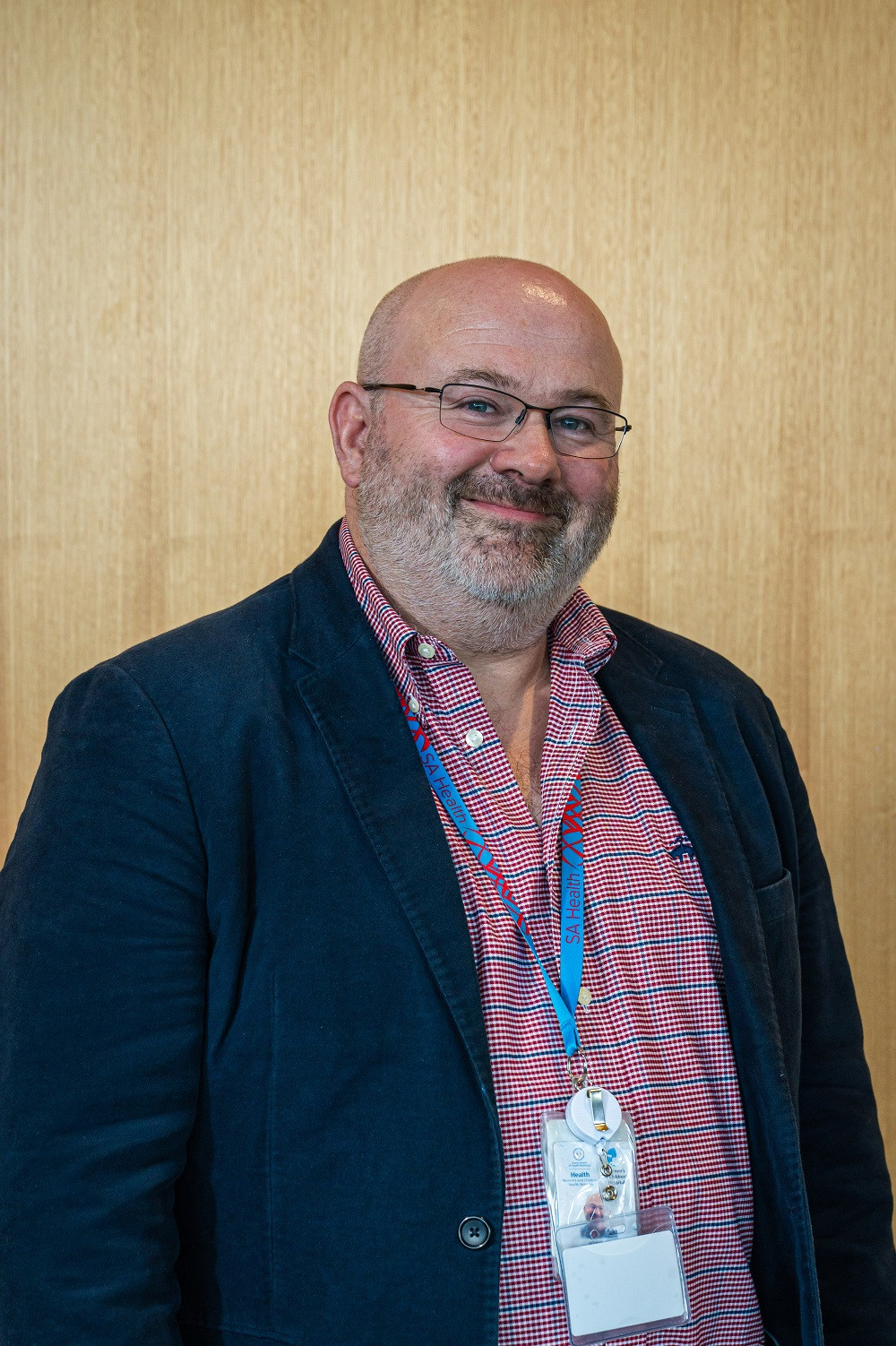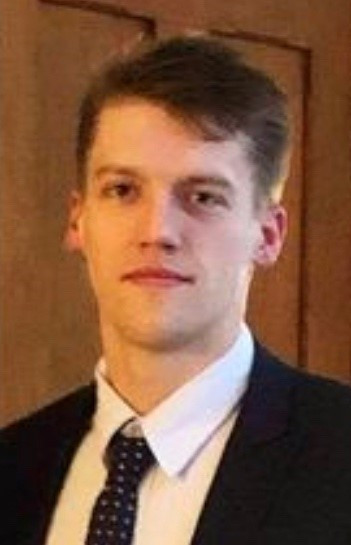Over 72,000 Australians suffer a stroke each year, with two-thirds left dead or disabled. There’s never been a more important time to fund research into brain aneurysm and stroke prevention and treatment.
1 in 4 adults globally will experience a stroke during our lifetime but 90% of these strokes can be prevented by addressing a few key risk factors, such as high blood pressure (hypertension), irregular heartbeat (atrial fibrillation), smoking, diet, and exercise.
Your donation can help researchers develop more effective stroke treatments, as well as how to reduce brain swelling and pressure that cause death and disability after stroke.
Research Grants 2025/2026
Funding: $25,000 Dr Jorn Van Der Veken
Project: Aneurysm / Stroke Extension 2025
Description: Additional funding will allow expansion of the project across both Royal Adelaide Hospital and Flinders Medical Centre. Previous support includes Laraine’s original donation to the NRF ($50,000) and the Brain Foundation ($40,000).
Research: The study investigates neuropsychological outcomes after elective treatment of anterior communicating artery aneurysms, examining the potential prognostic role of radiomics and proteomics. Intracranial aneurysms—outpouchings of brain arteries—affect approximately 2–3% of the population. Despite advances in treatment devices and techniques, their true impact, particularly on cognition, remains inadequately studied. This research aims to clarify the cognitive effects of preventative treatments, improving patient selection, informed consent, and overall treatment outcomes.

Funding: $50,000 Dr Feargal Ryan
Stroke and Neurosurgical Diagnostics
Description:
The blood-brain barrier (BBB) protects the brain from harmful substances circulating in the bloodstream. During stroke, damage to the BBB can worsen cerebral edema, amplify inflammation, and impair recovery. Currently, detection of BBB disruption relies on MRI imaging—costly and often inaccessible in emergency or rural settings. This project will apply next-generation molecular tools to identify blood-based biomarkers of BBB damage in stroke patients. The goal is to develop a simple diagnostic blood test to assess BBB integrity, monitor post-stroke recovery, and guide timely, personalised neurosurgical interventions.
Research:
Aim 1: Identify candidate biomarkers in blood samples from acute stroke patients with confirmed BBB disruption.
Aim 2: Validate biomarker specificity and sensitivity using molecular assays and clinical imaging correlations.
Aim 3: Develop a prototype blood test for early detection and monitoring of BBB damage.
Outcomes:
Establish a panel of reliable blood biomarkers for BBB disruption, supporting the development of accessible diagnostic tools. This approach aims to reduce dependence on MRI, enabling faster and more equitable stroke care, particularly in underserved settings.
Funding: $50,000 Dr Jorn Van Der Veken
Aneurysm / Stroke
Description:
Intracranial aneurysms—abnormal outpouchings of brain arteries—affect approximately 2–3% of the population. In recent years, a range of advanced devices and techniques has emerged, aiming to reduce the morbidity associated with aneurysm treatment. However, the true impact of these interventions on patients, particularly their cognitive outcomes, remains poorly understood. Cognitive effects are underreported in existing literature despite their relevance to quality of life. This study aims to evaluate the neuropsychological outcomes following elective treatment of anterior communicating artery aneurysms, with a focus on identifying predictive markers using radiomics and proteomics.
Research:
Aim 1: Assess cognitive function pre- and post-treatment using standardized neuropsychological tools.
Aim 2: Integrate radiomic imaging features to identify potential predictors of cognitive decline.
Aim 3: Analyse proteomic biomarkers for associations with neuropsychological outcomes.
Outcomes:
Generate data on cognitive outcomes post-treatment, identify prognostic imaging and protein-based biomarkers, and enhance clinical decision-making regarding patient selection, consent, and follow-up strategies.

2025 Research Funded:
Funded: $50,000
Junior P-Doctoral Fellow for 12-Months to work within the Translational Neuropathology Laboratory at the University of Adelaide. A major need in the lab is more personnel who can perform the ovine stroke surgery, currently performed only by A/Prof Turner, limiting the number of experiments possible per year.
During the post-doctoral appointment, the RA will be trained in this surgery, complementing their skills in ovine monitoring, post-op care, sample collection, and post-mortem procedures. This will enhance their research abilities and increase the lab’s experiment capacity, enabling more projects, collaborations, and therefore increase research outputs in terms of publications, conference presentations and grant applications, all of which are essential in securing competitive external research funding.
Working on several projects within the Translational Neuropathology Laboratory (TNL):
1.Secondary Neurodegeneration (SND):
2.No re-flow (NRF funded):
3. SPRINTS (Stroke – Prevention of Reperfusion Injury and Neuroinflammation – a Therapeutic Strategy)
Shannon Stuckey
Post-Doctoral Fellow, Translational Neuropathology Lab
Funded: $50,000
Research Assistant in the Translational Neuropathology Laboratory working on the following Stroke projects.
Dr Rebecca Hood, B. Biomedical Sci (Hons), PhD
Postdoctoral Research Fellow, School of Biomedicine, University of Adelaide

2024 Research Funded:
Funding: $25,980
Chronic Subdural Haematoma (cSDH) is an extremely common neurosurgical condition in which aged blood products collection on the brain surface beneath the skull, typically requiring surgical evacuation. cSDH prevalence is rising with our ageing population, and cSDH surgical evacuation is predicted to become one of the most encountered neurosurgical procedures by 2030. Up to 1/3 of patients undergoing cSDH evacuation will require repeat surgery due to recurrent bleeding, however, the pathways contributing to this are poorly understood. This study seeks to understand the haemostasic mechanisms that contribute to cSDH development, recurrence, and related surgical outcomes.

Ms Lola Kaukas BHlthSci (Hons), GradCert
Research Officer, Department of Neurosurgery, Royal Adelaide Hospital
Funding: $48,327
The most common cause of stroke (~85%) is blockage of a brain blood vessel by a clot (ischaemic stroke). The current goal of stroke treatment is to remove the clot from the vessel (recanalisation) and restore blood flow to the affected area (reperfusion) as fast as possible. However, despite successful recanalisation, many patients do not achieve adequate reperfusion, termed the ‘no reflow’ phenomenon, and this is associated with worse patient outcomes. This pilot study seeks to determine whether this phenomenon occurs in at risk, yet potentially salvageable brain tissue (penumbra).
Dr Rebecca Hood, B. Biomedical Sci (Hons), PhD
Postdoctoral Research Fellow, School of Biomedicine, University of Adelaide
Funding: $49,751
Subarachnoid haemorrhage (SAH) is a type of stroke. It occurs when a blood vessel in the brain is weakened and ruptures leading to bleeding around, and into the brain. One in three people who have this type of stroke will die, and those that survive often have permanent brain injury. There are few treatments known to be effective for reducing mortality and improving long term outcomes following SAH. Our program will develop a world-first large animal model of SAH, providing the platform for pre clinical trials of novel therapies and a pathway for rapid translation to human studies.

Dr Tim Webber MBBS FCICM, Intensive Care Medicine Fellow
Intensive Care Research Unit, Royal Adelaide Hospital
Funding: $10,507
![Abbott i-STAT[1].jpeg (64 KB)](/uploads/images/equipment/Abbott%20i-STAT%5B1%5D.jpeg)
The Abbott iSTAT Analyser Wireless is a state-of-the-art blood analyser used in many hospitals around Australia to provide real-time diagnostic information on patient's blood gases, particularly those in emergency care. Researchers at the University of Adelaide will be using this handheld, portable device to make sure that experimental conditions closely mimic the clinical scenario. This helps ensure their research is translationally relevant whilst they investigate a number of important neurological diseases including stroke and traumatic brain injury.
During surgical and emergency procedures its essential to ensure that arterial blood gases (the oxygen and carbon dioxide levels in the blood as well as the blood’s pH balance) remain within normal (physiological) levels. Variance outside of normal levels can worsen patient outcomes, therefore it is important to carefully monitor these parameters.
Dr Rebecca Hood, B. Biomedical Sci (Hons), PhD
Postdoctoral Research Fellow, School of Biomedicine, University of Adelaide

2022 Research Funded:
Funding: $35,195
Ischaemic stroke is a leading cause of death and disability worldwide. Arising due to cerebrovascular occlusion, current treatment involves removing the blockage to reestablish blood flow to compromised brain tissue, however, this often paradoxically worsens injury. Recently the mitochondrial metabolite succinate has been identified as a key driver in ischaemia reperfusion injury (I/R) post stroke, mediating its effects through binding succinate dehydrogenase (SDH). Malonate, a competitive inhibitor of SDH has the potential prevent I/R injury post stroke and markedly improve patient outcomes. Following from a promising pilot study, this project seeks to comprehensively evaluate the efficacy of malonate for the treatment of post-stroke reperfusion injury in a clinically relevant model.

Dr Annabel Sorby-Adams BHlthSc (Hons), PhD Visiting Research Fellow
University of Adelaide - Adelaide Medical School, Faculty of Health and Medical Sciences

2021 Research Funded:
Funding: $43,000
Research Area: Adult & Paediatric Stroke
Project: Disorders of blood vessels of the brain can cause devastating strokes which may be fatal or everely disabling. The mechanisms of their development are incompletely understood.
We propose to establish a biobank (collection of biological samples) to study the molecular basis of surgical neurovascular disease. Tissue samples will be collected from consenting patients during the course of their surgery for neurovascular conditions including: Cerebral aneurysms, Arteriovenous Malformations, Cavernomas, Arteriovenous fistula, Moya moya disease and spontaneous brain haemorrhage. By pairing the biobank with already established clinical neurovascular databases at the Royal Adelaide and Women’s & Children’s Hospitals, it is anticipated this biobank will facilitate studies into the pathological mechanisms of neurovascular disease.
Results of subsequent studies will inform development of novel diagnostic and therapeutic strategies for patients and their families. Pairing biobanks with large clinical database will undoubtedly reveal clinically significant measurable outcomes.

Professor Leanne M Dibbens BSc(Hons), PhD Professor of Human Genetics
University of South Australia - Australian Centre for Precision Health, Clinical and Health Sciences
Funding: $25,000
Project: Intracerebral haemorrhage (ICH) accounts for up to 15% of all strokes. Haematoma expansion occurs in a subset of patients of patients with ICH, and is associated with clinical deterioration, increased mortality and poorer functional outcomes.
This project will assess the ability of CTP dynamic spot sign to predict haematoma expansion and clinical outcome in a variety of subtypes of intracerebral haemorrhage. This will in turn determine which patients would benefit from early surgery to improve their outcome. We will also compare the sensitivity and specificity of the CTA spot sign and the CTP dynamic spot sign. CTP and CTA are currently standard of care in any major stroke centre such as the RAH for patients presenting with ICH, and no extra neuroimaging above standard care occurs during this project.

Dr Christopher Ovenden, University of Adelaide
Funding: $43,000
Project: Ischaemic stroke is a leading cause of death and disability worldwide. Arising due to cerebrovascular occlusion, current treatment involves removing the blockage to re-establish blood flow to compromised brain tissue, however, this often paradoxically worsens injury. Recently the mitochondrial metabolite succinate has been identified as a key driver in ischaemia reperfusion injury (I/R) post stroke, mediating its effects through binding succinate dehydrogenase (SDH).
Malonate, a competitive inhibitor of SDH has the potential prevent I/R injury post stroke and markedly improve patient outcomes. This project aims to evaluate malonate in a pre-clinical stroke model to enhance translation from pipette to patient.

Dr Annabel Sorby-Adams BHlthSc (Hons), PhD Visiting Research Fellow
University of Adelaide - Adelaide Medical School, Faculty of Health and Medical Sciences
The stroke research team, led by Assoc Prof Renée Turner, is using novel, pre-clinical models to map the development of brain swelling and changes in brain pressure following stroke in order to develop targeted and more effective treatments to reduce the devastating morbidity and mortality associated with these conditions.


Assoc Prof Renee Turner and Assoc Prof Lyndsey Collins-Praino
University of Adelaide
Funding: $76,629 - Perpetual
Project: The current project will investigate whether pericyte migration and activity contribute to secondary neurodegeneration following stroke. In order to investigate this question, the project will involve three specific aims:
1. To determine the early (primary stroke lesion) and late (secondary neurodegeneration) loss of brain tissue that occurs following stroke in two different experimental models of stroke.
2. To characterise the changes in pericyte migration and activity up to 3 months following stroke.
3. To assess whether alterations in pericytes are related to increases in levels of key neurodegenerative and neuroinflammatory markers in brain tissue post-stroke.
Assoc Prof Renee Turner
University of Adelaide
Funding: Coopers Brewery Foundation Golf Day 2019 $142,400
sAPPa is a molecule that is found naturally in the brain and levels are increased in response to injury as a protective response. Can administered sAPPa salvage brain tissue and improve outcome following stroke? This project seeks to determine whether administering this protein after stroke can reduce the amount of brain tissue injured, facilitate recovery and improve patient outcomes. Our project will rigorously test the efficacy of sAPPa for the treatment of stroke in both small and large animal models of stroke. From these findings we will be able to inform on the suitability of sAPPa as stroke treatment and whether advancement to clinical trials is warranted.
Assoc Prof Renee Turner
University of Adelaide
Secondary neurodegeneration and the underlying mechanisms of this delayed neuronal loss remain poorly understood. Pericytes are known to be involved in the early injury pathways following stroke; however, they may also contribute to delayed neurodegeneration given their roles in maintaining blood-brain barrier structure, transport, controlling blood flow, driving new cell growth and formation of new blood vessels. Despite this, no studies have investigated the contribution of pericyte changes to secondary neurodegeneration post-stroke. Accordingly, this study seeks to further understand what drives secondary neurodegeneration and whether pericytes are key contributors to post-stroke neurodegeneration. Specifically, we will examine the course of pericyte changes following stroke and determine alterations in key neurodegenerative and neuroinflammatory markers.
Annabel Sorby-Adams research is looking at that brain swelling and increased brain pressure which are the leading causes of death and disability in the first week following stroke. Annabel’s investigations will examine the effect of a treatment, the NK1 tachykinin receptor antagonist and whether it can prevent the development of brain swelling and life threatening elevations in brain pressure.
Click here to donate to Stroke Research.